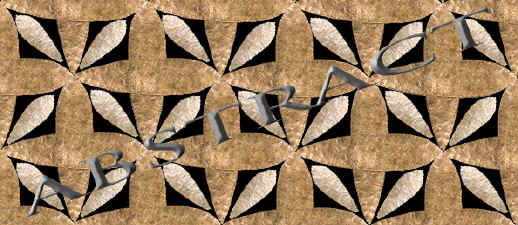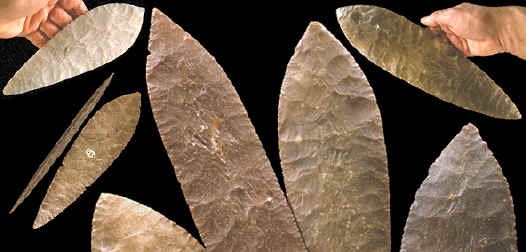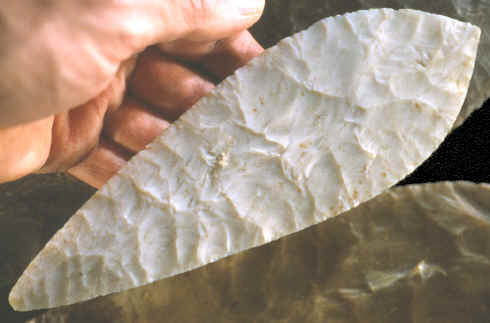|
||
|
||
|
"By 1500, Aztec social organization had
become extremely complicated---".---1996,
Brian M. Fagan, "The Oxford Companion To Archaeology", p. 78.
by Peter A. Bostrom Sometime between A.D. 900 and 1175 people began to migrate into the central valley of Mexico from the north. These were the people who were later to become the Aztec empire. The Toltec Empire collapsed in 1175 and within the following 150 years nearly all of the major Aztec cities were formed. Between the years 1350 and 1428 there was a major population surge that was accompanied by agricultural intensification, growth of market trade, urbanization and political expansion. Between the years 1428 and 1519 the Aztec Empire expanded further through alliances and by 1519 they had conquered much of Mesoamerica. |
||
|
The Aztec Empire was at its peak when Hernando Cortes landed on the coast of Veracruz in 1519 with a Spanish army of 450 solders and 16 horses. The estimated total area under Aztec control at this time, was 77,000 square miles with a population of 5 to 6 million people. Less than two years later, by August 1, 1521, the Spanish defeated them in their capital city of Tenochtitlan, where Mexico City is today, by a blockade. As a result of the 75 day blockade an estimated 240,000 people died of starvation before surrendering. The reason given for the seemingly easy defeat of so many by so few is the smallpox disease carried by the Spanish solders, military technology and military tactics. |
||
| CONTINUE ON TO PAGE TWO | ||
|
"REFERENCES"
1973,
Perino, Gregory, "Artifacts Made From Tabular Flint", Central
State Archaeological Journal, April #2, pp. 60-65. |
||




